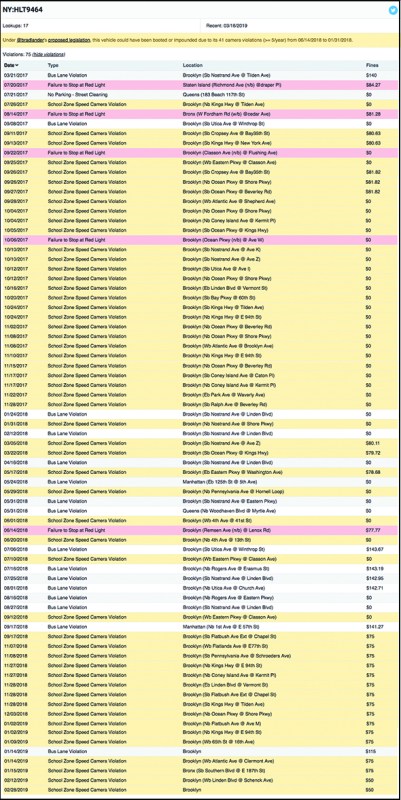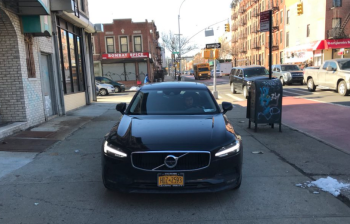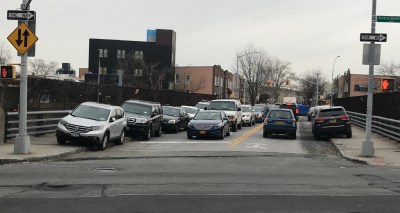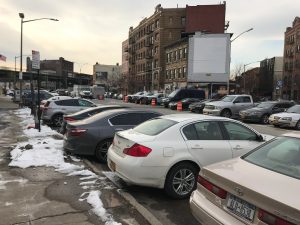Twitter Gives Reckless Drivers a Reprieve from Public Embarrassment

How’s their driving? Who knows?!
Twitter has blocked automatic responses from the @howsmydrivingny account for alleged violations of the company’s obscure rules — meaning that members of the public will no longer easily be able to obtain and then share the driving records of repeat scofflaws on social media.
As of Wednesday, people who tweeted a license plate, and tagged @howsmydrivingny, no longer received a detailed readout of that car’s record of parking tickets and moving violations. Some instead received a personal response, “@howsmydrivingny has been suspended by Twitter and cannot respond to queries currently.”
The tweet recommended that members of the public use the HowsMyDrivingNY website, which remains active. That website, like the Twitter bot, merely combs publicly available summons data, but in a more user-friendly manner.
.@HowsMyDrivingNY has been suspended by Twitter and cannot respond to queries currently.
To look up plates until the suspension is lifted, please use https://t.co/jHqZkov1hA.
We (bot and @bdhowald) apologize for the inconvenience.
— How's My Driving NY (@HowsMyDrivingNY) August 12, 2020
As a point of fact, @howsmydrivingny was not “suspended” by Twitter; the website told the creator of @howsmydrivingny, Brian Howald, that he can still tweet from the account manually. The account is merely blocked from using the website’s “application programming interface,” which is a fancy way of saying the manner in which automatic Twitter accounts operate.
The company told Howald that he ran afoul of the social media company’s rules because his bot automatically responds to everyone on someone’s tweet — so that if a person tweeted a license plate to @howsmydriving, but also tagged a politician or the mayor or anyone else he or she wanted to know about the alleged scofflaw, the bot would automatically send the driving record to all those tagged people.
Howald said he has changed the programming so that the bot no longer replies to everyone on the tweet, but he’s frustrated because that feature was one of the main advantages of @howsmydriving because it alerted multiple people of the scofflaw.
“I don’t want to overestimate the value of the tool, but it serves a purpose in letting people, particularly elected officials and city agencies, know that people are seeing drivers do dangerous things on the regular,” Howald said. “Someone is like, ‘That driver almost hit me in a crosswalk as he was speeding.’ And that person tweets the license plate, tags an elected official, and that sends the message to everyone that reckless driving like this a recurring problem.
“It reinforces that there are people doing these things,” he added. “Yes, the website is still up, but it makes it less easy to share the results with an elected official.”
Since it was launched in March 2018, @howsmydrivingny has automatically responded to tens of thousands of requests for driving records from people who merely by tweeted the license plate at the account. Last year, @howsmydriving was tagged 19,841 times in tweets or direct messages. Howald said that 14,970 of those requests revealed a driver with at least one parking or moving violation, evidence that people are using the Twitter feature after seeing something bizarre on the street.
The suspension of interface privileges was perhaps inevitable. Last month, Twitter’s internal red flags were waiving at full alert after the NYPD used an unmarked minivan as part of a brutal arrest of a Black Lives Matter protester. So many people witnessed the kidnap-style arrest — and so many people tweeted the license plate JGB1864 to @howsmydrivingny — that Twitter temporarily prevented people from seeing the results, a practice known as “shadowbanning.” (For the record, the NYPD’s van has nine speed-camera violations and one red light violation since June, 2019, which is a lot, even by the low standards of NYPD driving.)
Howald said he was monitoring his email for days after the shadowbanning, but still missed an Aug. 4 email from Twitter telling him his account would be prevented from automated tweeting on Aug. 12. The email said the restriction also stemmed from an alleged violation of Twitter’s rules against posting duplicate content — the cop car’s license plate was automatically tweeted scores of times as protesters and members of the media looked up the driving record.
Howald is disputing this part of of the restriction, too.
“It’s not duplicate content because isn’t really duplicative automated tweeting,” he said. “It was merely sending out the same information to each person who asked for that information. It’s the same information, but it was requested by a different user seconds later.”
There may end up being a happy ending to the whole saga (for everyone except scofflaw drivers). Twitter said the restriction may be worked out.
“We are working with the developer to bring it into compliance with our rules,” spokesperson Lindsay McCallum told Streetsblog.





